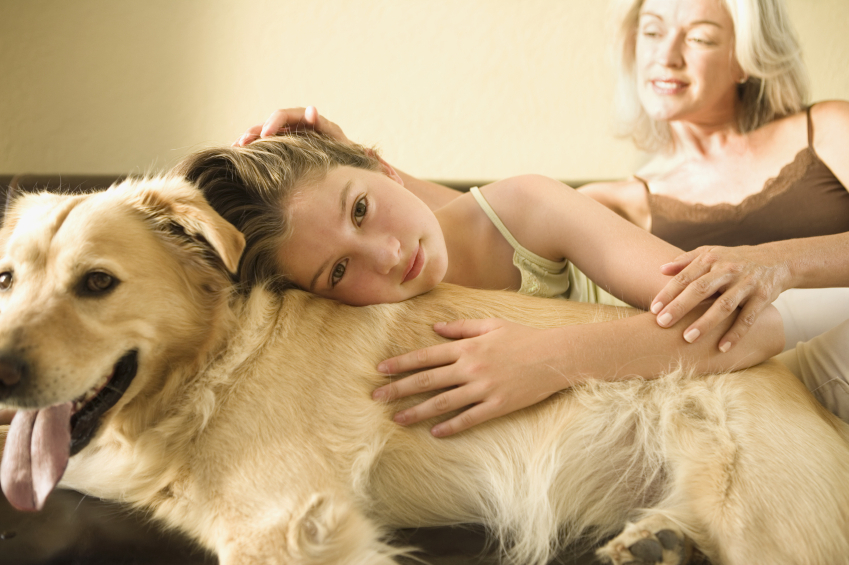Meet Winston, the Paws In Training Answer Dog
Winston, one of our cyber training dogs, has boundless energy, not to mention attitude. We’ve hired him to answer your dog training questions because frankly, when he doesn’t have a job to do, he’s unbearable! Winston can also answer your cat training questions as his Mom has given him a cheat sheet with all the answers.
![Winston-the-answer-dog[1]](https://pawsintraining.com/wp-content/uploads/2014/05/Winston-the-answer-dog1-300x199.jpg)
Below, are our most frequently asked questions about dog training and cat training. If you have a question about dog or cat training that you don’t see answered, please feel free to contact us directly!
Why classroom training is not suitable for reactive dogs
Why classroom training is not suitable for reactive dogs that bark, lunge, growl or attempt to hide when they see strangers or other dogs.
If your dog is reactive to strangers or other dogs and barks, lunges, growls, spins on leash or tries to hide, bringing him to a class for training will not help. In fact, it will almost certainly make the behaviors worse.Won't the dog get socialized in the classroom?
Many people believe that attending a training class will socialize their reactive dog, thereby eliminating barking, growling, lunging or hiding behaviors. This is a myth that can have serious consequences for your dog. Reactive behaviors rarely stem from a lack of socialization; they are almost always the result of fear. Improper training or handling of a reactive dog is virtually guaranteed to make the behaviors worse. Here's a human analogy. Let's pretend that you are afraid of snakes. How would you feel if I tied you to me and made you go into a room filled with snakes that were freely slithering around the room? Everywhere you look, there's a snake doing snake-like things such as hissing and flicking its tongue and slithering its way toward you. Would this scenario make you feel safe and secure? If you can still breathe right now, consider this question: Would you feel better or worse about snakes after being trapped in a room with them? [caption id="attachment_2214" align="aligncenter" width="300"] Each time you inappropriately exposure your dog to something that concerns him, you are throwing a snake on him.[/caption]
Each time you inappropriately exposure your dog to something that concerns him, you are throwing a snake on him.[/caption]
Getting help
Fearful or reactive dogs require special handling to overcome their fears and learn that "the scary thing" is safe. This training begins at home where the environment and the dog's exposure to "the scary thing" can be managed. As your dog's mental stability depends on proper handling, our policy is not to allow reactive dogs in a classroom setting. Please call us today for information on how we can help your pet in a way that makes him feel safe.What happens if I enroll my reactive dog and come to a class anyway?
We hope that you now understand that putting a dog in this situation will most certainly increase the dog's fear and resultant anxiety responses. We take every precaution to protect dogs by asking you to confirm that your dog does not bark, growl, lunge or hide when he encounters strangers or other dogs before you submit your reservation. If you choose to enroll your dog anyway and he is reactive in class, we will have to ask you to take your fur-baby home. Class registrations are non-refundable- we implore you not to put your dog, or us in this awkward position.How cats communicate- cat body language
How cats communicate- Cat body language
Did you know that cats communicate with each other and with their humans using body language? Humans communicate via a verbal language, therein lies the source of many human-cat misunderstandings. Your cat is "talking" to you in the only way he knows how. The burden is on us to learn his language and thus interpret his messages.Reading cat body language
Cats have acute vision and respond well to visual cues. Their eyesight is not as clear close-up so if they are having trouble seeing something right in front of their noses, move the object a little further away. Visual communication for cats includes the use of their tail, eyes, mouth, ears and the positions in which cats hold these body parts sends a different message. Want to eavesdrop on your cat's "conversations"? We invite you to use the links below which demonstrate specific cat body language. When the image opens, double click on the image to enlarge it. Cat Tail Positions Cat Ear Positions Cat body PositionsWhy are cats aloof?

It's a myth that all cats are aloof and the ones that are aloof may likely be under socialized and/or anxious about their environment.
Many people believe that cats are aloof because they compare cat behavior to dog behavior and just expect cats to act like dogs. They are however, two very different animal species with their own specific gifts, drives and behaviors. Dogs have been domesticated through selective breeding and have been purposely bred to live with and work with humans. Cats on the other hand, have only been "domesticated" for roughly 10,000 years (at least that we have scientific record of) with the primary goal of hunting vernon. It's only been within the last 50 years that selective breeding, breeding for specific traits, including adaptability to live with humans, has been a focus of breeding programs. The differences in the animal species and what they have been bred for directly affect behavior. Until cat domestication catches up with dog domestication, we'll just have to accept cats for what they are- their own individual species with their own individual traits and behaviors.Cats can be quite affectionate.
If your cat is not as affectionate as you'd like or if he is displaying shy or hiding behaviors, call a cat trainer for assistance. You can have the relationship you want with your cat and a professional can help guide the way.Is there a guarantee for dog and cat training?
[caption id="attachment_1853" align="alignright" width="300"] Michael and Caramel caught napping before their training session. Looks like our work will be a bit delayed today![/caption]
Michael and Caramel caught napping before their training session. Looks like our work will be a bit delayed today![/caption]
 Michael and Caramel caught napping before their training session. Looks like our work will be a bit delayed today![/caption]
Michael and Caramel caught napping before their training session. Looks like our work will be a bit delayed today![/caption]
One can never guarantee the behavior of an animal or the behavior of its owner for that matter.
Any guarantee relative to an animal's behavior is considered unethical and therefore not sanctioned by the certifying entities for professional dog or cat trainers. What we DO guarantee:- Your Paws In Training trainer or behavior consultant will arrive on time, be professionally dressed and fully prepared for your session.
- You will be provided with a complete training plan tailored to your specific needs and abilities.
- You will receive free, lifetime (of your pet) follow up support via phone, email and video for any behavior addressed in a training session.
- If we catch your dog being utterly adorable while we're in session, we WILL photograph it for you. And when it's a priceless image, we'll likely ask your permission to use it on our website!
Can you train a cat?
 Yes, you can train a cat!
Yes, you can train a cat!
You can train a cat, just like any other animal, for a variety of different behaviors.
Training cats typically requires more time and patience because unlike dogs, cats are not bred specifically to work together with people. As independent thinkers, it can be more challenging to motivate a cat but once you identify the right reinforcer…something that makes your cat's entire being light up, he will respond just as readily as a dog to positive reinforcement cat training.
Cats require mental stimulation to exercise both their brains and their bodies, and cat training is an excellent way to fulfill this need. Whether you have a behavioral problem which needs to be addressed or if you are simply looking for more ways to engage with your cat and improve your relationship, cat training is the answer. Our cat training services include behavioral work such as elimination problems, litter box avoidance, fear and anxiety.
Positive reinforcement cat training addresses things such as teaching your cat to come when called, introduction to other household pets, safe play with children, and relationship building games and exercises.How long does it take to train my dog or cat?
How long does it take to train my dog or cat?
The amount of time required to train your dog or cat is dependent on what you want your pet to learn, how frequently you practice with your pet and how consistent you are in implementing the new rules. If you have practiced with your dog as requested, you will see improvement in your dog or cat's behavior very quickly. Most people are amazed at the speed of results and accuse us of switching their dog or cat for another!How many sessions with a trainer are required?
- In-home dog and cat obedience training typically requires one to two sessions depending on what you want your pet to learn.
- Behavioral work consisting of fears, phobias and aggression typically take 2-3 sessions which are scheduled bi-weekly or monthly depending on the particular circumstances.
How much time do I have to put into training my dog or cat?
- Dog and cat obedience training- if your dog or cat is learning new obedience skills, we ask pet parents to practice with their pet at least three times daily in increments of 3-5 minutes each.
- Behavioral training varies widely and is contingent on the behavioral problem being addressed.
Do you offer board and train dog training programs?
In a survey recently conducted by a national research group, dog owners reported being largely dissatisfied with board and train programs. The primary reasons cited were cost, and failure to get what they perceived they paid for. This data accurately reflects a problem facing all animal trainers- the animal owner's perception of what they will get is often in conflict of what they will actually receive. No one else can fully train your animal and have them respond as well for you as they do for their trainer unless YOU also practice with the pet. Pet owners who pay thousands of dollars for a board and train program expect that their pet will be perfectly trained without any involvement on their part. Unfortunately, animals don't automatically transfer behaviors to new handlers, a fact that can leave many people disappointed. Owner perception of the services offered by Paws in Training is our most important business criteria. As such, we do not offer board and train programs.How much does it cost to train a dog or a cat?

How much does it cost to train a dog or cat? The cost is contingent on what you'd like your pet to learn.
In home behavioral work: Dog training or cat training sessions conducted in your home are 90-minutes each and the fee is $275 per session. Each session includes written handouts and video and a veterinary report when warranted. For 30 days following your session, we ask that you call your behavior consultant weekly to review your animal's progress on the plan. There is no charge for this follow up period. Most obedience problems and many behavior problems can be resolved in a single session. Behavioral work to address fears, phobias, anxiety and aggression may require an additional session in 6-8 weeks depending on the particular behavior being addressed. In home obedience work: Obedience lessons conducted in your home are $185 each. How many sessions you'll need is contingent on the specific things you'd like your animal to learn. If you prepare your list, we'll be happy to estimate the number of sessions required for you. Traveling to Raleigh to meet with our Behavior Consultant? On-site sessions are provided to meet the needs of your pet.Why should I train my dog or cat?
 When we choose to bring an animal into our home as a pet, we have to understand that the animal is going to be true to itself and behave in ways that are primal to its species. From the moment the animal arrives in your home, it can only react to situations using its natural instincts. The expression of these instincts and the resulting behaviors are often incompatible to living in our homes.
Training your dog or cat provides the animal with alternate behaviors to perform- behaviors which ARE compatible to living in a home. An animal couldn't possibly offer non-instinctive behaviors unless you teach them those behaviors! Dog and cat training teaches animals the specific rules of your home, which behaviors are acceptable, and how to curb their natural instincts which creates harmonious cohabitation.
When we choose to bring an animal into our home as a pet, we have to understand that the animal is going to be true to itself and behave in ways that are primal to its species. From the moment the animal arrives in your home, it can only react to situations using its natural instincts. The expression of these instincts and the resulting behaviors are often incompatible to living in our homes.
Training your dog or cat provides the animal with alternate behaviors to perform- behaviors which ARE compatible to living in a home. An animal couldn't possibly offer non-instinctive behaviors unless you teach them those behaviors! Dog and cat training teaches animals the specific rules of your home, which behaviors are acceptable, and how to curb their natural instincts which creates harmonious cohabitation.
When it comes to dog or cat behavior, pet owners always have three choices:
- Alter the pet's environment in a way which doesn't allow the animal to practice the behaviors you find offensive. This is a bandaid which works great for prevention but it doesn't teach the animal what you want him to do differently. Therefore, you will have to alter the environment for life.
- Dedicate 10-15 minutes a day for a short period of time to train your dog or cat in new behaviors.
- Remain frustrated and dissatisfied with your relationship with your pet.
When you train your dog or cat, you create an animal that is a joy to live with, easy to control, and one with which you want to spend quality time. Isn't that the reason you got a cat or a dog in the first place?
How do I know that the training will work?
There are a number of different ways to teach animals a specific behavior and every dog or cat will respond differently.
We ensure you that the animal training we perform will work for you and your dog or cat by utilizing the following steps:
- Your dog trainer or behavior consultant will utilize a variety of techniques until they find the one that your pet responds to.
- They then practice with the dog or cat ensuring that the animal clearly understands what's being asked of them and that the animal is readily offering the new behavior.
- They will then teach YOU how to elicit the specific behavior and ensure that the animal is readily offering the new behavior FOR YOU, before they leave your home. This step is critical to ensure that your dog or cat performs as well for you as he does for his beloved dog or cat trainer.



